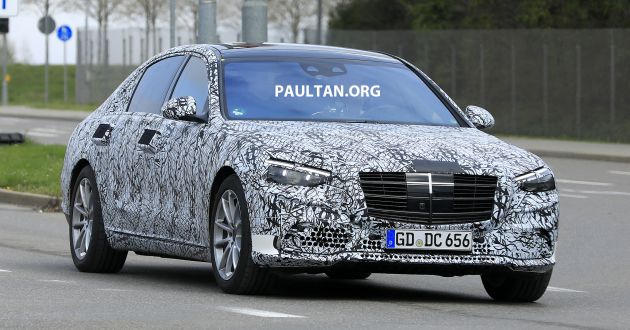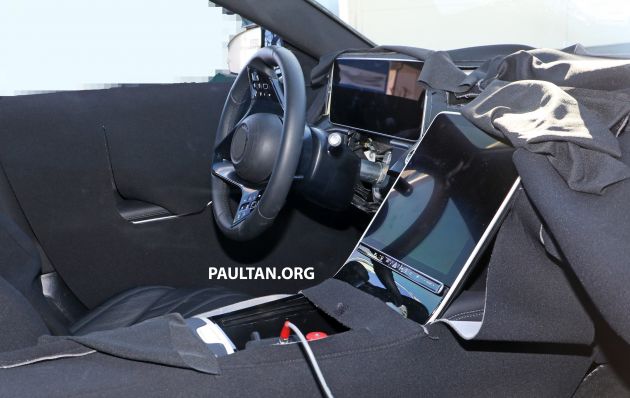A prototype of the next-generation W223 Mercedes-Benz S-Class has been spotted once again, this time revealing a tad more skin than previous test mules. What’s clear is that the flagship sedan will get a larger radiator grille than the existing W222 model, and the partially covered LED headlights reveals what looks like triple, vertically-mounted LED DRLs that are connected to a long horizontal LED bar up top.
The grille also features a huge glass panel, indicating that it will come with a range of driver assistance systems, of which will include at least Level 2 autonomous driving, sources say. Also seen is an unapologetically obvious camera that should be part of the 360-degree camera system.
Other driver assist systems may include Active Parking Assist, adaptive brake lights, Keyless-Go, Hands Free Access and Driving Assistant Package. The last item is a suite of systems that comprises Pilot Distance Distronic (adaptive cruise control with stop & go), Active Lane Keeping Assist (semi-autonomous driving), Active Blind Spot Assist and autonomous emergency braking. This is currently available in some models, so expect the W223 S-Class to get some upgrades as well.
We’ve also gotten a closer look at the cabin, featuring two separate digital displays. One is for the instrument panel, whereas the other is a humongous tablet-style touchscreen that grants access to most of the vehicle’s functionalities. Below that is a row of buttons for Dynamic Select (drive mode), parking assistance system, HVAC and media. Expect the Mercedes-Benz User Experience (MBUX) to be deployed here as well.
The new S-Class will be built at the company’s Factory 56 facility, and should come with a range of six- and eight-cylinder engines. Expect hybrid variants to be offered as well, along with an all-electric version reportedly called the EQS. Reports indicate the standard S-Class models will ride on the MRA platform, while the EV gets the Modular Electric Architecture (MEA) instead.
Source: Read Full Article


